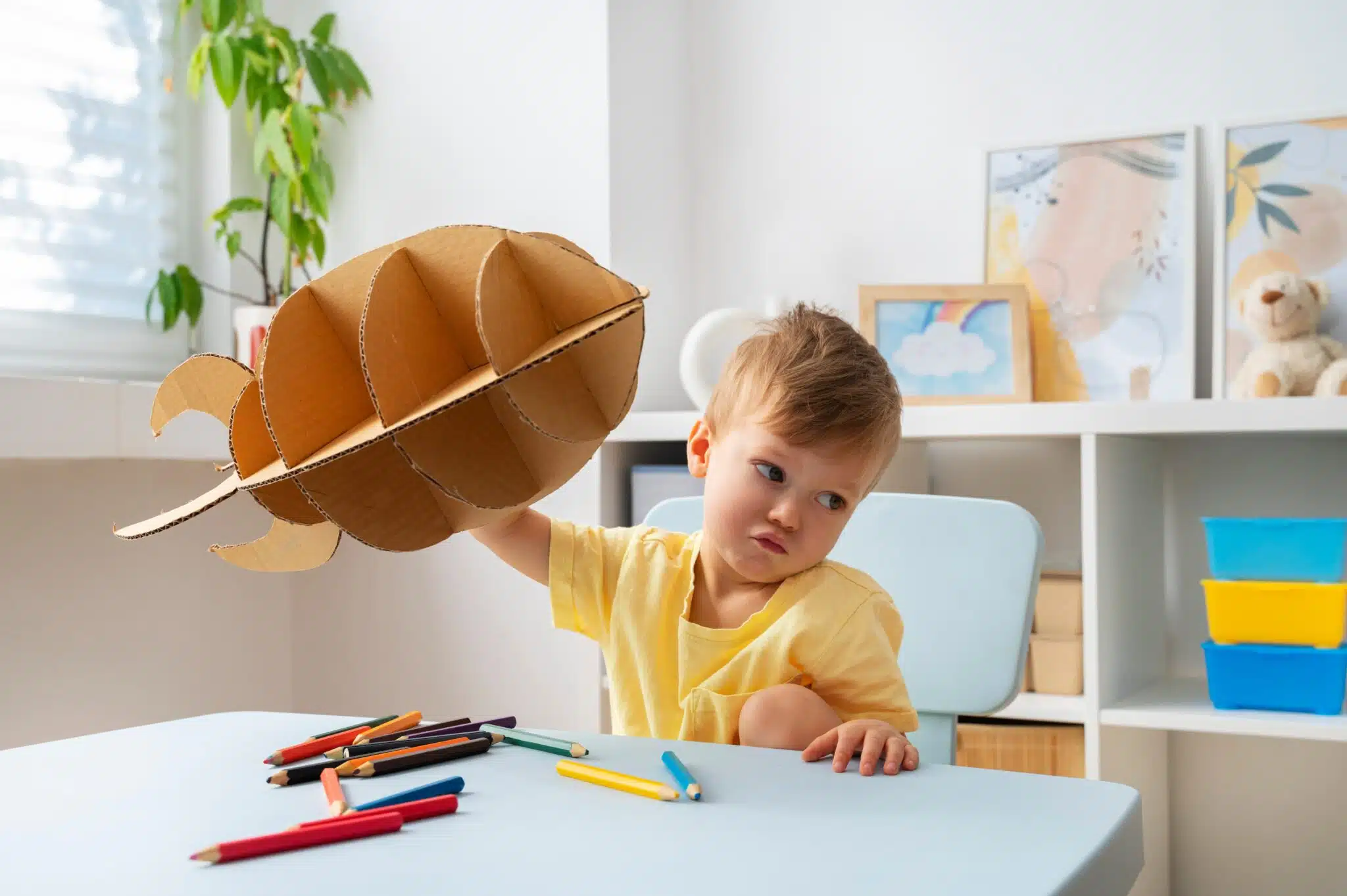In an age where entertainment and stimulation are just a click away, boredom in children seems to have vanished. Tablets, smartphones, video games, and streaming platforms provide a constant supply of distractions, keeping young minds occupied almost all the time. In this hyper-connected context, boredom has become an enemy that parents and educators try to avoid at all costs. If a child says, “I’m bored,” the common response is to quickly offer an activity or device to keep them engaged.
But what if, instead of being an obstacle, boredom was an essential ingredient for creativity? What if those moments of apparent mental void were actually fertile ground where new ideas could incubate and flourish?
Boredom as a creative catalyst
Contrary to what many believe, boredom in childhood is not a state to avoid but a fundamental tool for creative development. Allowing children to experience moments without structured stimuli opens the door to deep mental processes that foster imagination, problem-solving, and innovation.
When children find themselves without electronic devices or organised activities, their brains are forced to seek new ways to entertain themselves, activate their imagination, and explore alternatives they might not have considered before.
Researcher Manoush Zomorodi, in her TEDx talk “Bored and Brilliant,” suggests that apparent inactivity allows the brain to access unique creative states. “When we get bored, we run out of distractions, and then our brain starts making original connections,” she explains. The everyday monotony, she argues, can be a more powerful creative engine than we might think.
Similarly, psychologist Sandi Mann, author of The Science of Boredom, describes boredom as an evolutionary mechanism that drives us to seek new experiences, ideas, and stimuli. Allowing children to face boredom without constantly intervening fosters a type of self-directed exploration essential for creative development.
Of course, this boredom doesn’t always result in conventional or productive ideas; sometimes, it leads to mischief, which is often the behaviour we’re actually trying to avoid. However, this mischief can be a form of creativity in itself, helping children learn and develop important skills through trial and error.
Strategies to channel children’s boredom positively
To ensure boredom becomes a developmental tool rather than a source of problems, consider the following strategies:
- Provide Open-Ended Resources: Offer materials like building blocks, paints, clay, or natural elements that can be used in multiple ways. This encourages children to explore and create freely without rigid instructions.
- Set Clear Boundaries: While it’s beneficial for children to have the freedom to manage their time, it’s important to set guidelines about unacceptable behaviours. This prevents them from turning to dangerous mischief and teaches them to channel their creativity constructively.
- Embrace the Mess: A child’s creative process is rarely tidy or predictable. Creating involves testing, mixing, spilling, building, breaking, and starting over. In other words, creativity is inherently chaotic. Embracing the mess doesn’t mean giving up on all structure but understanding that free play and spontaneous exploration create environments where materials move, transform, and sometimes overflow. Allowing children to express their ideas without fear of “messing up” sends a clear message: their ideas matter more than neatness.
- Encourage Reflection: Prompt children to think about activities they would like to do or projects they want to start. Asking, “What could you create with what’s around you?” or “What story could you invent today?” fosters planning and self-organisation skills.
The Atelier: a tool to boost creativity
Our methodology creates a classroom dedicated to free and creative exploration. Children have access to a wide range of materials (paper, clay, wood, fabrics) and are invited to experiment without a predetermined outcome.
When a child has the chance to discover new techniques or work with unusual materials in the Atelier, they carry these experiences into other contexts. So, when faced with boredom, they have a repertoire of creative tools they can use to generate new ideas or develop their own projects.
The freedom to explore without a set outcome and the constant invitation to try, make mistakes, and try again translates into an essential skill for channelling creativity.
Children aren’t bored – They’re incubating ideas
Next time you hear “I’m bored,” remember that you might be witnessing a valuable incubation of ideas. Allowing space for boredom means creating opportunities for creativity, innovation, and the development of crucial life skills.
Far from being a negative experience, boredom in children can be a powerful tool for the development of creativity, resilience, and independence. By allowing children to face and manage their boredom, we give them the opportunity to incubate ideas, explore their imagination, and build the essential skills needed to tackle future challenges. As parents and educators, our role is to provide the right environment and support to help this process flourish.
Anna Gil
Project Manager for Character Education Programmes at Fundación Parentes
